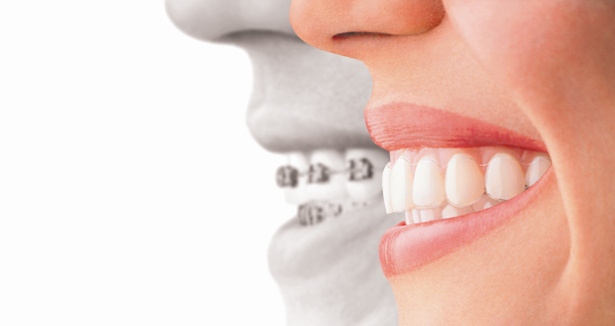Embracing change: doing things differently

This is the second-last embracing change post!
So far in this series we’ve looked at cleaning your braces, what you can and can’t eat while wearing braces and the vital importance of elastics for orthodontic treatment.
In this post we are going to look at the difference between looking after traditional braces and looking after clear aligners like Clearsmile and Invisalign.
The difference between traditional braces and clear aligners
There is one major difference between caring for traditional braces and clear aligners. With clear aligners you don’t have wires, brackets and elastics. Just clear aligner trays that fit snuggly onto your teeth.
This means no wires to rub against your cheeks, wires to poke your gums or elastics to snap off. So you don’t have to worry about ulcers, sore gums and snapping elastics.
As far as eating goes, you can take your aligners out and eat normally. So, again, you needn’t worry about eating soups and stews for a few weeks after treatment. In fact throughout your treatment you can take your aligners off when you eat and when you have an important meeting or event.
Caring for clear aligners
You may have guessed that there are fewer steps to caring for Invisalign than traditional braces. For example, with Invisalign you simply take out the aligners when you eat. This means no food can get stuck in your braces.
All you need to do after each meal is clean your teeth before replacing the aligners. If, for whatever reason, you can’t clean your teeth (say if you’re out having lunch) we recommend drinking water to rinse your mouth; and chew gum for a few minutes before spitting it out and replacing your aligners.
When you brush your teeth you should also clean your aligners. Not with hot water. To clean your aligners you should use a small amount of toothpaste and gently scrub the aligners. After cleaning your aligners you should rinse them in water.
Storing your aligners
The Orthosmile Orthodontics team will provide you with two cases to protect your aligners from damage or loss:
- First case: this is for the aligners you are currently using.
- Second case: for the previous aligners, in case your current one is lost or damaged.
As you can see, looking after clear aligners is a much shorter list than braces. What clear aligners do require that traditional braces don’t is your compliance. If you don’t wear them as prescribed the treatment will either be less effective or won’t work at all.
In some cases, non-compliance can result in having to spend time and money on extra aligners.
Thank you for reading our second-last post on caring for your braces.
If you would like to know more about caring for clear aligners, please don’t hesitate to contact us today. Alternatively, feel free to visit us at one of our four convenient locations across Brisbane.
